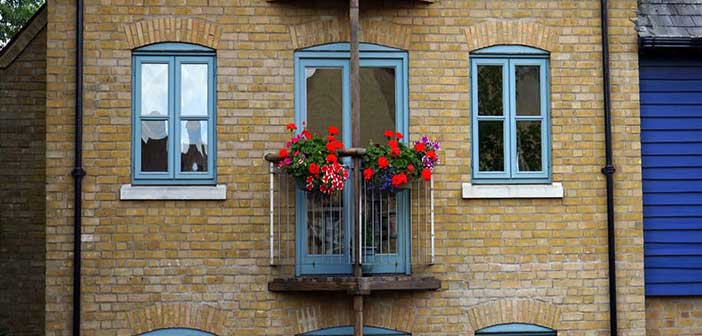6 Points to Consider Before Investing in Challenging Neighborhoods with Positive Cash Flow

Buying in an undesirable neighborhood can make financial sense, but is it worth it? The short answer is, it depends. Of course, it depends on the property and the neighborhood, but it also depends on the investor. Buying in a challenging neighborhood can end up being a disaster, but it can also produce good returns and involve minimal headaches if you do it right. But proceed with caution. This type of investment is not for everyone. In this article, I provide pointers on what to think carefully about as you consider investing in a challenging neighborhood. These are followed by tips for making the right investment if you do decide to buy in a less desirable area. If you think you’ve found a great opportunity in a less than desirable neighborhood, make sure you carefully consider the following points before jumping in. Remember, don’t just think about these points purely from a numbers perspective. Be realistic and consider if the property is right for you as an investor.
7 Points to Consider Before Investing in Challenging Neighborhoods
1. Evaluate the neighborhood.
If you are new to real estate investing, make sure you understand what type of neighborhood the property is in. There are loosely defined definitions that investors use to classify neighborhoods. Most challenging neighborhoods that offer decent investment opportunities fall into the C class. These areas are generally characterized as having older homes (older than 40 years), predominately investor-owned properties with homes and neighborhoods not well maintained. These areas also tend to have higher crime rates, but they are not "war zones." Make sure you know the difference and stay away from areas that have high crime or increasing crime rates.
2. Consider your goal with the property.
Fix and flip or long-term rentals? A good property in a C-class neighborhood can be a good long-term rental investment. Of course, tenant selection is key but more about that under my tips section. Tenants in these neighborhoods are typically blue-collar workers who, in my experience, stay a long time. If your goal is fix and flip, you might be able to invest in a riskier neighborhood, provided you can get in and out quickly and you and your contractors are comfortable spending time in the neighborhood. 
3. Understand whether Section 8 is a possibility for the property.
If you buy in a challenging neighborhood, you will likely have Section 8 in your tenant pool. In some places, these can be a good, even great, way to go—but in others, they can be full of problems. I’ve heard of investors in some states making a real killing by focusing on Section 8 tenants. On the flip side, I’ve also heard of investors who’ve had nothing but problems—bad neighbors, property destruction etc. The Section 8 approval process differs by locale, but there is usually an extra inspection as part of the process by a Section 8 inspector, so be sure to budget time and money accordingly. _ Related: How Investors Get Burned Following the 2% Rule in Low-Income Neighborhoods_ Here in Minnesota, this inspection typically adds a couple of weeks to the leasing process and can add a bit of extra expense to fix items identified during the inspection. That said, the items that need fixing are usually items that we would end up fixing anyway, so it is debatable as to whether these expenses are really “extra.” Tip: Do not let a Section 8 tenant move into a property before it passes inspection. If the property fails inspection, there is always the risk, albeit small, that you won’t be able to collect the rent you were expecting.
4. Make sure the numbers work.
If you can buy a property in a challenging neighborhood free and clear but would need to borrow to buy in a Class A or B neighborhood, the deal may make good sense if it meets your other requirements. Also, you are going to want a higher return when you buy in an undesirable neighborhood—make sure the numbers work.
5. Prepare for the management challenges.
Properties in challenging neighborhoods can carry a higher management burden. Eviction rates are higher, on average, than in better neighborhoods, and you need to keep a much closer eye on other issues. Here is a list of some items that we see with our less-expensive properties:
- Tenants are more likely to fall behind on utility payments. In Minnesota, water and sewer delinquencies are eventually assessed to property taxes, so we get stuck with the bills if we don’t watch this closely.
- Nuisance fines (garbage in yard, uncut grass, etc.) are more common so we must watch these properties more closely to make sure tenants are doing what they agreed to in the lease and keeping the property from becoming a nuisance.
- Our experience with tenants in lower-priced housing is that there are more cash transactions, more money orders delivered in person (not via mail), and more confusion in general about how to pay. Don’t expect that you will be able to easily require tenants to pay online. Not all tenants will have bank accounts or credit/debit cards. You’ll need to pick up rent in person more often or have a physical location where tenants can drop off rent.
6. Balance your portfolio.
Properties in less desirable areas are not likely to lose as much value during a downturn, so if you are already heavily invested in Class A properties, diversifying into Class C may make sense. We’ve been in an up market for quite a while, but let’s not forget what happened to many investors during the great recession. Many who were heavily invested in Class A neighborhoods got hit hard.
7. Evaluate the amount of properties you want in your portfolio.
Is more better? If you are building a long-term rental portfolio or focusing on a high volume of fix and flips, consider that you can buy more properties in challenging neighborhoods than if you focus on more desirable neighborhoods. OK, if you’ve made it to here and you still think buying in a challenging neighborhood could be right for you, make sure to look at the following tips.
6 Tips for Those Investing in Challenging Neighborhoods
1. Don’t jump in blindly at the first opportunity that comes along.
These properties are riskier, so you want to do your homework to make sure you are getting a good investment.
2. Avoid the obvious bad investments.
This includes properties in high crime areas or where crime is on the rise. Also, properties in a flood zone.
3. Find areas that are on the upswing.
Drive the area to look for signs of new investment, talk to residents and shop owners, check out permits. If you don’t find any signs that the neighborhood is on the upswing you may be better served to keep looking.
4. Find the diamond in the rough.
You’ll do better if you can find a property that looks bad but has potential. Look for properties that mostly require cosmetic improvements as opposed to structural then make it the best-looking home in the neighborhood. Especially if you are buying in a higher crime area, make sure your improvements include security features. 
5. Develop rigorous tenant screening and selection standards and stick to them.
This is always important for long-term rentals but even more so for properties in challenging neighborhoods. Meet with the applicants, run the credit checks, call the references, talk to former landlords and pay attention to your instincts. Make sure the tenants meet your requirements and fit the neighborhood. Remember, you want tenants that will be good neighbors as well as good renters. _ Related: 7 Ways to Discover if a Neighborhood is Up and Coming_
6. Make sure you are comfortable spending time in the neighborhood.
You’ll need to be there for improvements, showings, etc. I hope this gives you something to ponder as you decide whether to invest in a challenging neighborhood. 
